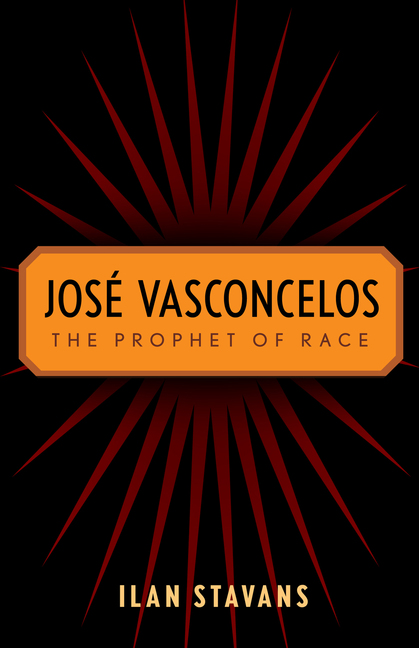Making Güeras: Selling white identities on late-night Mexican television
Gender, Place and Culture
Volume 12, Number 1 (March 2005)
pages 71–93
DOI: 10.1080/09663690500082984
Jamie Winders, Associate Professor of Geography
Syracuse University, Syracuse, New York
John Paul Jones III, Professor of Geography and Development
University of Arizona, Tucson
Michael James Higgins (1946-2011), Professor Emeritus of Anthropology
University of Northern Colorado
This article examines discourses of whiteness and color in Mexico through a discussion of White Secret, a widely available skin-lightening cosmetic product. In an analysis of a televised infomercial advertising the product, we examine contextualizations of whiteness in Mexico, as figured through the product’s representations of light-skinned female bodies and advanced cosmetic technology. We consider the ways that White Secret can speak to broader conceptualizations of whiteness and identity and, furthermore, argue that such an engagement points to the need to interrogate the geographical and epistemological limits of current understandings of whiteness based in Anglo-American and Latin-American contexts.
‘la güera’: fair-skinned. Born with the features of my Chicana mother, but the skin of my Anglo father, I had it made. No one ever quite told me this (that light was right), but I knew that being light was something valued in my family. (Moraga, 1981, p. 28)
These lines from Cherrie Moraga’s 1979 essay, ‘La Güera’, succinctly describe the chromatic privilege into which she was born. With her mother’s Chicana features but her father’s white skin, Moraga, in her words, ‘had it made’. The only güera in her family, she could escape the correlation between being Chicana and being ‘less’ (p. 28), a connection that haunted her mother and other family members. Although her essay goes on to chart her denial of ‘the voice of [her] brown mother’ (1981, p. 31) and her struggles to grasp the specificities of various forms of sexual and racial oppression, Moraga’s initial discussion of an upbringing that ‘attempted to bleach me of what color I did have’ (1981, p. 28) captures several processes that we analyze in this article. As Moraga quipped, she was ‘“anglicized” ’; the more effectively we could pass in the white world, the better guaranteed our future’ (ibid.).
This article analyzes one contemporary path to that ‘white world’ as it operates within the context of Mexico. We examine discourses of whiteness and coloration through an analysis of ‘White Secret’, a cosmetic product marketed across Mexico that explicitly guarantees lighter skin and implicitly offers the lifestyle associated with such a chromatic change1. Historian Kathy Peiss (2002) has recently charted the ways that US cosmetics companies have relied upon and reinforced connections between healthy bodies, ‘made-up’ (female, white) faces and modernity, in efforts to market their products globally and create international mass markets. In this article, we trace similar links between bodies, race, cosmetic products and modernity, as we raise questions about whiteness and identity in Mexico, processes neatly packaged within a 30-minute, late-night infomercial peddling a skin-care solution that can produce in two weeks a white skin tone which previously required generations of racial miscegenation.
To think through how this skin-lightening product and its marketing strategies become legible and convincing within Mexico, we draw from a number of literatures that together help unpack the secrets of White Secret and the desire for white skin on which it depends. As Moraga’s autobiographical reflections and Peiss’s documenting of ‘American cosmetics abroad’ both make evident, in many contexts, ‘light’ was—and, we would add, still is—seen as ‘right’. White Secret is located squarely within this framing, as it explicitly promises white(r) skin and implicitly offers the improved socio-economic position of white privilege. As we subsequently suggest, what remains ‘secret’ in White Secret is why Mexican women want to move away from that ‘brown body’ of which Moraga wrote—a desire for lighter skin that signals the traces of a colonial past and present in Mexico. Postcolonial studies, driven ‘to invert, expose, transcend or deconstruct knowledges and practices associated with colonialism’ (Sidaway, 2000, p. 592), provide one particularly useful means of prising open these silences around questions of bodies, race and desire, as White Secret, as both product and text, resonates with many practices linked to colonialism and its deployment of racialized discourses. Postcolonial studies, in conjunction with whiteness studies and examinations of race and ethnicity in Latin America, create a useful theoretical framework through which to engage White Secret. It is to this White Secret that we now turn…
…Stepan (1991), in her analysis of eugenics in Latin America, suggests that historically, a whitening thesis in Mexico focused on a mestizo (mixed ‘blood’) ‘cosmic race’ rather than a ‘pure’ white race. This ‘cosmic race’, made famous by Mexican intellectual José Vasconcelos, was composed, at least in theory, of a racial configuration whose racial and ethnic mix surpassed all initial ingredients. The path by which Mexico could reach this ‘cosmic race’, however, led through eugenics to a set of practices that in Latin America constituted ‘above all an aesthetic-biological movement concerned with beauty and ugliness, purity and contamination, as represented in race’ (Stepan, 1991, p. 135). At the pinnacle of this movement was lighter skin, a location at which beauty and purity were concentrated and from which the ‘brown body’ denied by Moraga was successively removed over time.
Across Mexico’s ancient practice of whitening, Latin America’s eugenics of the early 1900s and a White Secret of the twenty-first century, then, the aesthetic and the biological are imbricated in a chromatic system that revolves around purity and contamination, beauty and ugliness. In all three instances that span Mexico’s post-conquest history, the chromatic system in operation is also a hierarchy of lightness for which, as Moraga noted, light is right. In this system where darker pigments signify what Ann Laura Stoler (1995) calls the ‘enemy within’ (p. 52), being Moraga’s ‘brown’ and ‘less’ remains the unspoken…
Read the entire article here.
